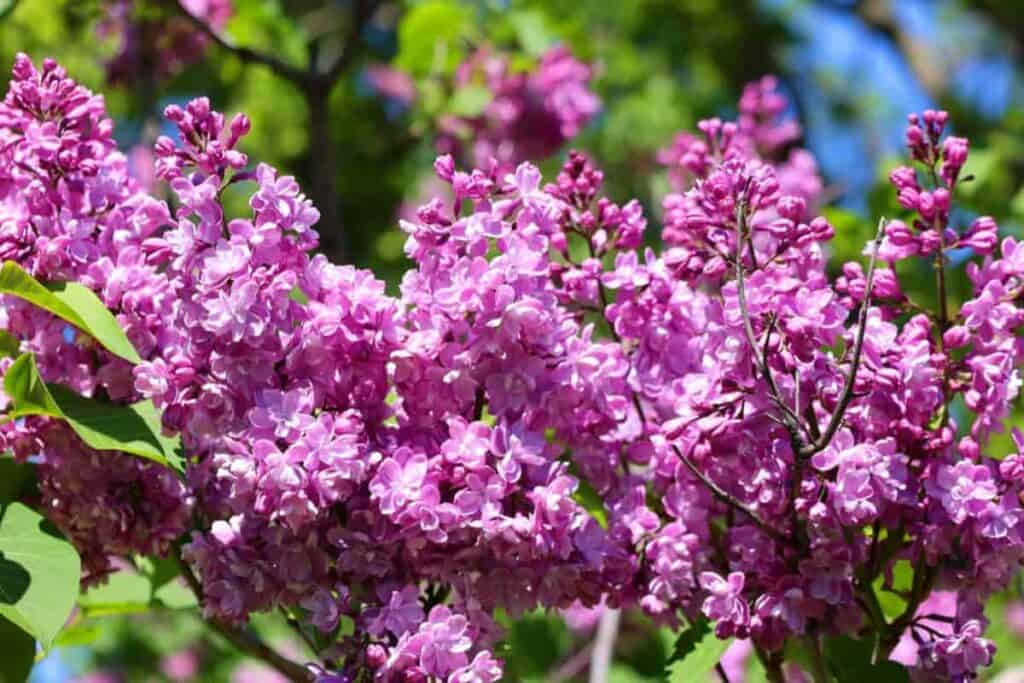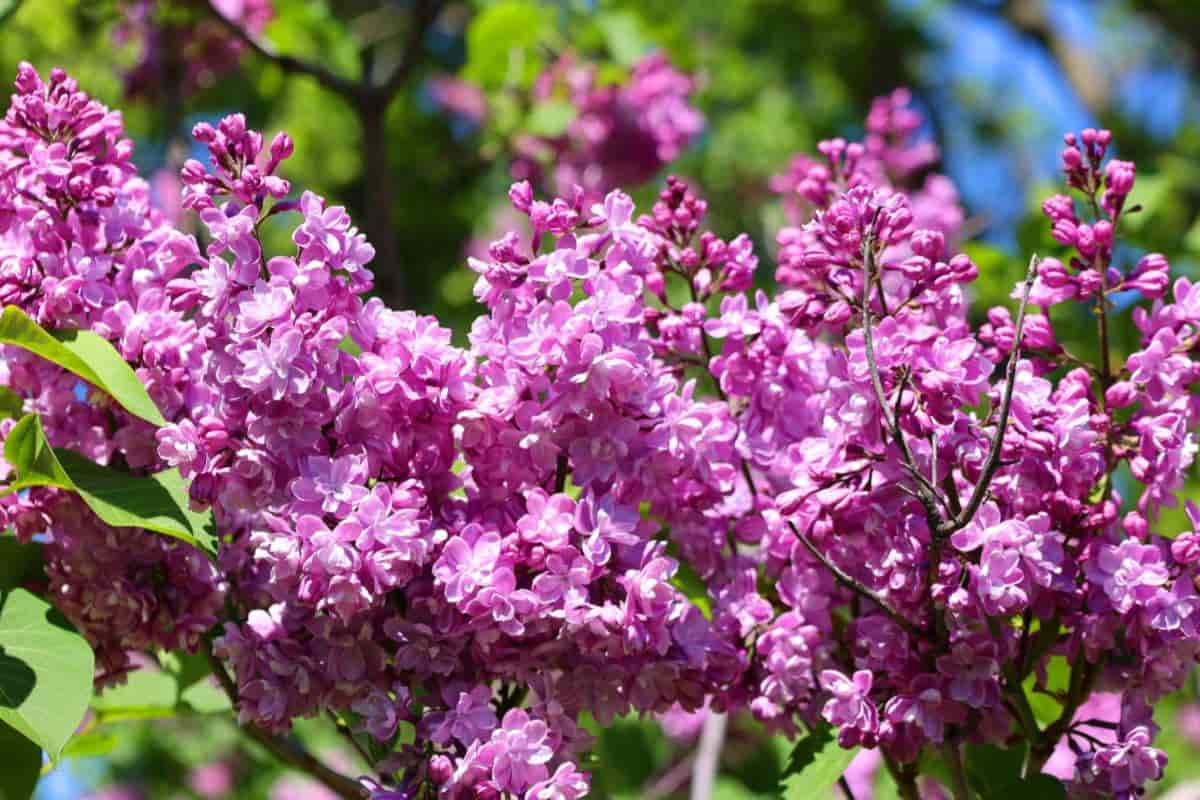Since fall planting is considered an important factor in the future development of good shrubs in the Rochester, New York, climate, additions to the world-famous lilac collection at Highland Park are planted in that season.
Usually, this is done after the fall rains, during late September or early October, when soil conditions are ideal, and there is time for plants to become established before cold weather.

Planting is the responsibility of the nursery crew, which is also in charge of propagation and knows the history of each plant in the collection.
For replacement needs and to increase the collection, budding is done in July, and grafting on young privet understock in winter. In either case, care is taken to start plants on their roots as soon as possible.
With grafted stock, privet understock is removed at the time the plants receive their final shift in the nursery, and new plants from outside sources are inspected to ascertain if they are on their roots before they’re set in the nursery row where they stay two years before taking their place in the collection.
Moving Lilacs To Permanent Locations
Young lilacs are moved to their permanent locations, a few at a time, with bare roots carefully protected against exposure to drying by sun and wind.
They are set in-ground previously enriched with organic matter in the form of well-rotted manure and leaf mold.
Care is taken as they are planted so that no air pockets form because this will occur unless the soil is nicely watered in to settle it.
The last detail is important and may mean a poorly leafed shrub that needs two years to establish itself instead of a husky, thriving shrub that does well the first year after planting.
Pruning
But for the removal of weak growth and crossing branches, little pruning is done now. And, it has not been found necessary to stake newly-planted shrubs except to shield those under 4 feet tall from the admiring crowds at “Lilac Time.”
Immediately a small lilac is secured in its place. A cup-shaped depression is made around its trunk and filled with leaf mold to ensure adequate moisture and protection of its roots during the first year.
Watering
After that, the cultural program followed is simple but precise. The collection is located on a hill’s south slope and is composed of gravelly, well-drained soil with a non-acid reaction. It is exposed to the full sun at all times.
This is an advantage except during the hot months of a dry summer when watering becomes necessary, for although lilacs will not tolerate stagnant water at their roots caused by poor drainage, they demand sufficient water to stimulate and carry on their new growth during the summer months.
Fertilizing
Because of competition for food, other plants are not placed close to the lilacs. Although they do not require a great amount of nourishment, they should have an occasional application of complete fertilizer at two-year intervals.
Highland Park lilacs used to be mulched with well-rotted manure and leaf mold every other year, but due to the limited supply of aged manure, commercial organic fertilizer was substituted recently.
New Feeding Program
Under the new feeding program, the trees are given a complete organic fertilizer, cultivated into the top few inches of soil in early spring. The application rate varies with the size of the shrub.
In addition, some organic material is also occasionally worked into the soil to retain some moisture in the gravelly loam, which drains so rapidly. Over-fertilizing is, of course, avoided as it results in heavy, woody growth and fewer blossoms.
Cultivation and Removal of Faded Blossoms
Two other factors help produce the display the public travels from far and wide to view: cultivation and removal of faded blossoms.
From early spring until late fall, the area around the base of the plants is continually cultivated but lightly so that roots at the surface are not disturbed or damaged.
Cultivation tends to cut down competition for food and helps reduce moisture evaporation.
The development of larger blooms also depends somewhat on removing all faded ones immediately while the stem is still green. It has been found that when flower stems turn brown and seed pods begin forming, removing the faded flowers takes much longer.
Because the Highland Park staff is not large enough to rush this job through, other park help is called in.
44659 by Wilbur E. Wright
